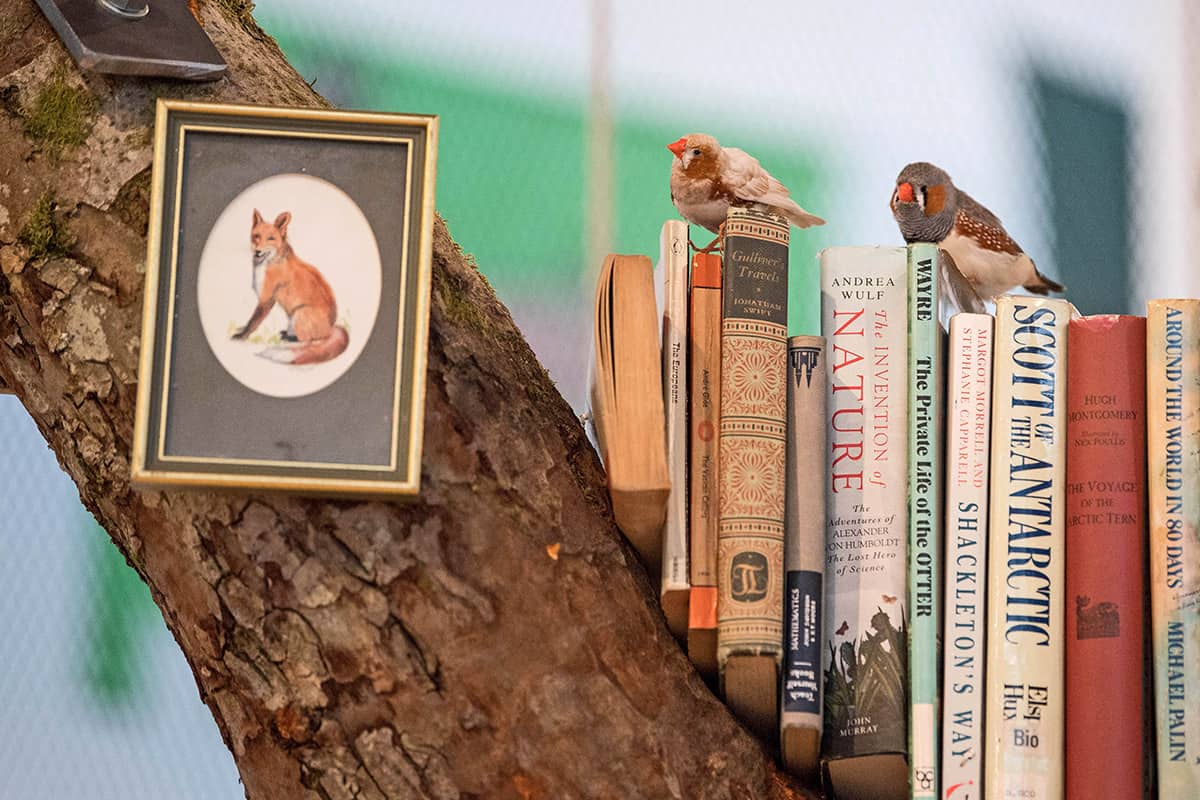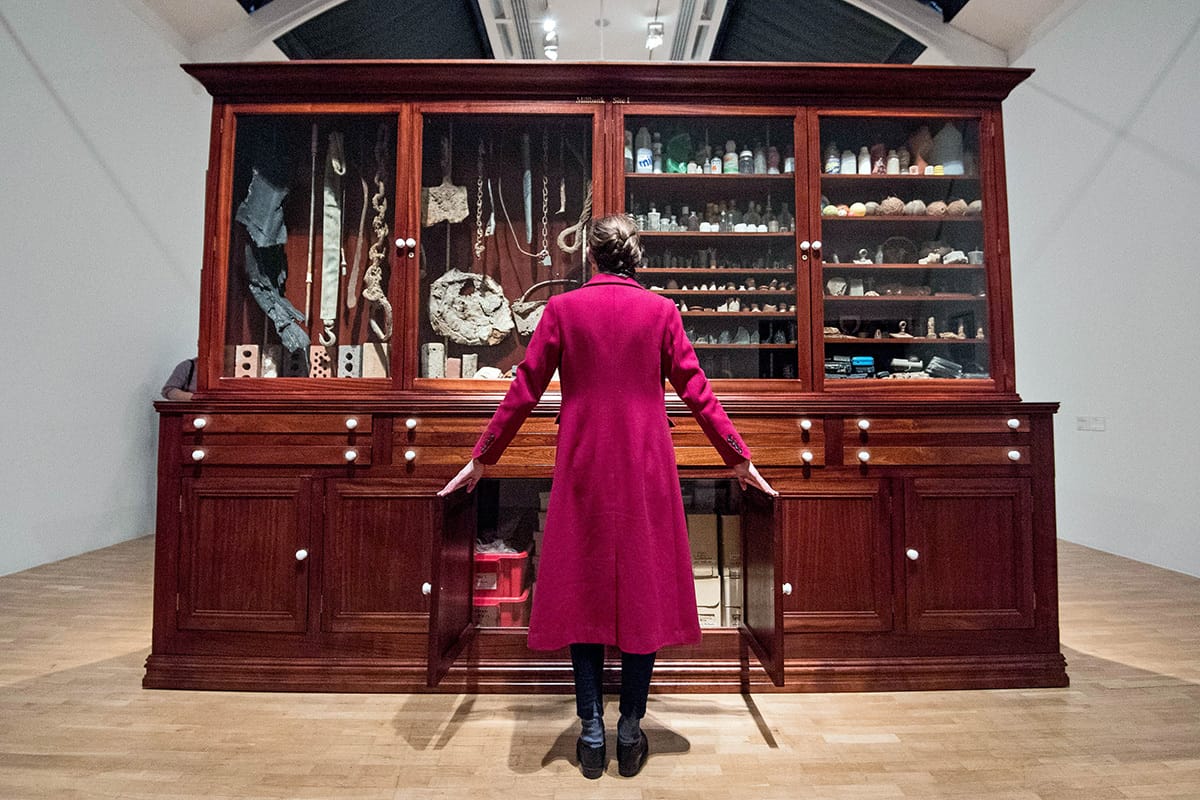
Zebra finches fly and twitter about a dead apple tree which has been planted amid piles of books about birds inside the Whitechapel Gallery. This is the only time you will see a living organism in Mark Dion’s Theatre of the Natural World.
Stuffed, dissected and dead animals show up everywhere. Heraldic images of dead game hang on one of the gallery’s walls: a fox strung up, a stag shot through, and a boar’s head in a pool of blood.
They recall the historical importance of the chase for Europe’s aristocracy.
Beneath the banners is the fallen wreckage of a hunting blind disguised as a large hay bale. It attests to the decline of hunting as sport, but suggests nostalgia for the days when it was an acceptable pastime.
The aviary is surrounded by four blinds, used by hunters in the wild to disguise themselves from their prey.

Cured meats and a dead mallard hang inside one cluttered blind. The table is arranged for an elegant meal, with animal print crockery, placemats and napkins. Another blind looms above visitors. Its well-ordered room is furnished with a research library and a camouflaged-patterned chair. Finally, there is a blind for the dandy hunter, decorated with chandeliers and animal skulls.
Dion’s art explores the complex relationship humans have with nature. On one hand, humans project on to wildlife ideas that suit them: hunger, desire, fire. On the other, humans produce myths about nature and try to debunk these myths with science.
An upstairs gallery has been transformed into a naturalist’s study. Photographs of stuffed polars in museums from around the world hang on the walls, which are covered in dark wallpaper bearing images of extinct species. It is a reminder that polar bears also face possible extinction, but the photos lack any chilling dispassion.
A further warning of humanity’s impact on the environment comes in the form of a frightening bird skeleton covered in black tar and images of dead trees drawn in the gloopy substance.
Reality and fantasy are combined in many of the naturalist’s trinkets: There’s a unicorn’s horn – the legend is true, but the horn is not; and real shark’s teeth hang from a resin “coral” reef.
Further upstairs is the Bureau of the Centre for the Study of Surrealism and Its Legacy.
In 2002, Dion delved into the forgotten corners of the University of Manchester to select a plethora of objects, from taxidermied animals to Egyptian figurines, to fill the fake office. It is a body of outdated knowledge that plays on Victorian eccentricities.
A large glass-fronted cabinet contains items retrieved during a dig on the Thames foreshore in 1999. Inside each drawer lies random bits of broken plates, soles of shoes, bones and drowned mobile phones – a poetic record of our presence in the world.

The final work, Wonder Workshop, is a display of curiosities, their forms derived from illustrations of animals, plants and instruments found in 17th-century engravings.
The objects glow with a green fluorescent light in the dark room like the ghosts of forgotten knowledge.
Mark Dion: Theatre of the Natural World is on at Whitechapel Gallery until 13 May.






